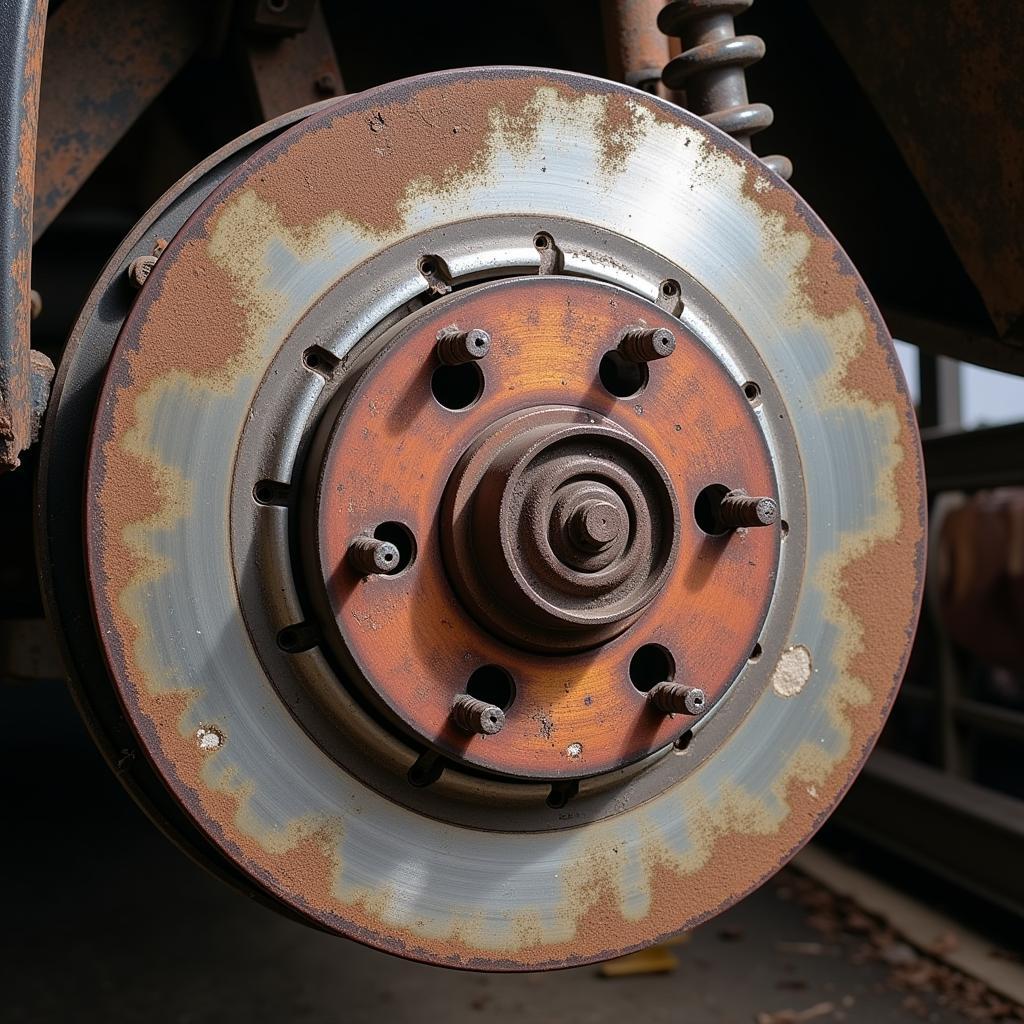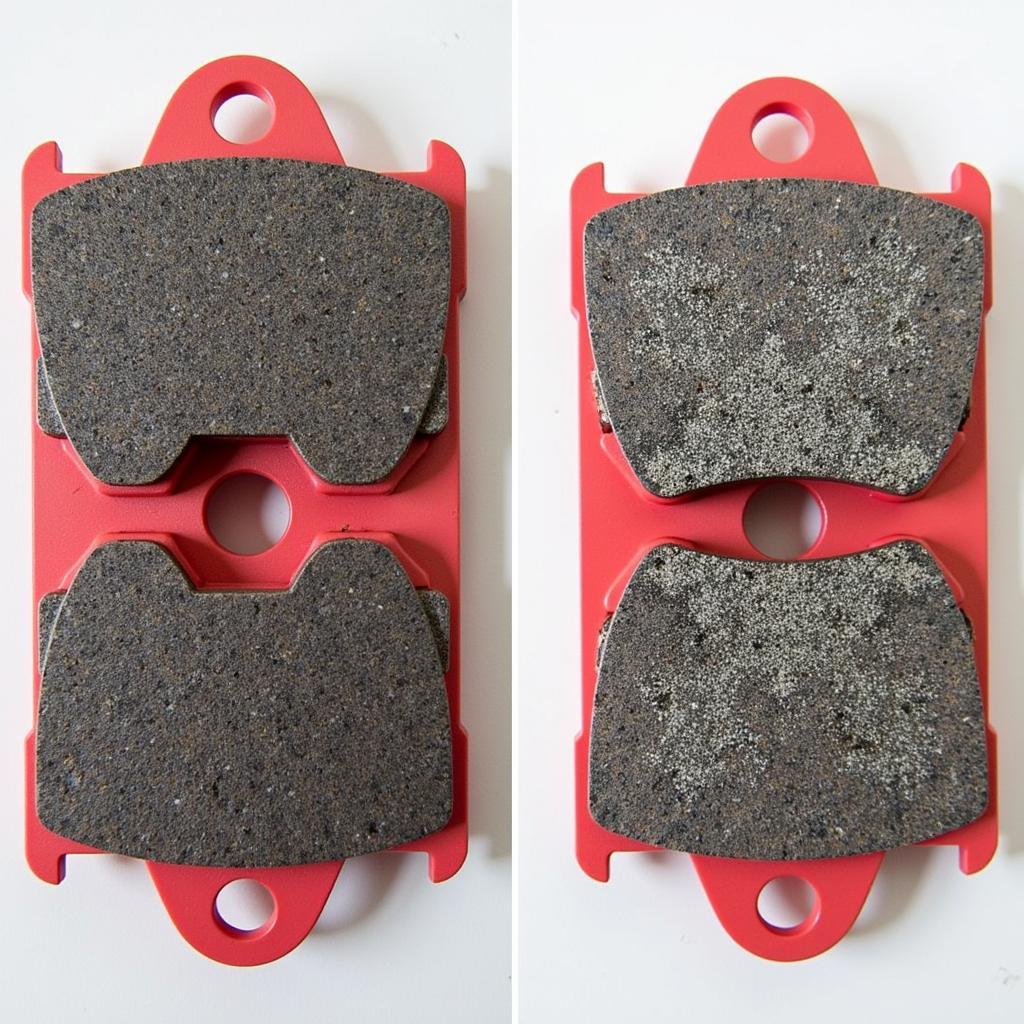Experiencing a pulsating brake pedal that feels like your ABS is engaging, yet your dashboard remains stubbornly warning-light-free? This disconcerting sensation can be caused by a number of factors, ranging from minor issues to serious malfunctions. Let’s delve into the potential culprits behind this unsettling brake pedal behavior and discuss how to remedy the situation.
Understanding the Intermittent ABS Feeling: What Could Be Wrong?
When your brake pedal mimics the pulsing sensation of an active Anti-lock Braking System (ABS) without any accompanying warning lights, it’s crucial to investigate further. This atypical behavior signals a potential problem within your braking system that demands immediate attention.
Here are some of the common culprits behind this issue:
1. Warped Brake Rotors: The Most Likely Culprit
 Warped Brake Rotor
Warped Brake Rotor
Warped rotors are the most frequent offender when your brake pedal feels like ABS is kicking in. The uneven surface of a warped rotor can cause the brake pads to intermittently grip and release, creating a pulsing sensation through the pedal.
How to Identify: You might also notice vibrations in your steering wheel or brake pedal when applying the brakes.
2. Worn Brake Pads: A Common Cause of Braking Issues
 Worn Brake Pads
Worn Brake Pads
Worn brake pads, especially those worn down to the metal backing plates, can cause uneven contact with the rotor. This inconsistent contact can result in a pulsing feeling similar to ABS activation.
How to Identify: Squealing or grinding noises when braking are telltale signs of worn brake pads.
3. Air in the Brake Lines: A Hidden Culprit
Air trapped within your brake lines can compress when you apply the brakes, leading to a spongy or pulsating pedal feel.
How to Identify: If your brake pedal feels soft and sinks closer to the floor than usual, air in the brake lines could be the culprit.
4. Faulty ABS Sensors: Triggering False Positives
While less common, a malfunctioning ABS wheel speed sensor can send incorrect signals to the ABS control module, potentially causing it to engage intermittently and unnecessarily. This can lead to the pulsing sensation even when the ABS warning light isn’t illuminated.
How to Identify: This issue often presents with other symptoms, such as erratic speedometer behavior or issues with traction control.
5. Issues with the Brake Booster or Master Cylinder: Less Common but Serious
Problems with the brake booster or master cylinder are less frequent but can also contribute to a pulsating brake pedal.
How to Identify: These issues usually present with additional symptoms, such as a hard brake pedal or difficulty stopping the vehicle.
What to Do If Your Brake Pedal Feels Like ABS but No Warning Lights
“When a driver describes experiencing a pulsating brake pedal without warning lights, it’s essential to approach the situation with caution,” advises John Miller, a seasoned automotive engineer with over 20 years of experience in vehicle diagnostics. “A thorough inspection of the entire braking system is crucial to pinpoint the root cause and ensure the vehicle’s safe operation.”
Here’s a step-by-step guide to addressing a brake pedal that mimics ABS activation without warning lights:
- Don’t Ignore It: This is not a problem that will resolve itself. Continuing to drive with a compromised braking system can be extremely dangerous.
- Inspect Your Brake Pads and Rotors: Visually check the thickness of your brake pads and look for any signs of warping or uneven wear on the rotors.
- Check for Air in the Brake Lines: If you suspect air in the lines, bleeding the brakes is necessary to restore proper hydraulic pressure.
- Seek Professional Help: If you are unable to identify the issue yourself or lack the necessary tools and expertise, take your vehicle to a trusted mechanic specializing in brake repair. They have the diagnostic equipment and knowledge to accurately diagnose and address the problem.
- Don’t Delay Repairs: Once the issue is identified, address it promptly to ensure your safety and the optimal performance of your vehicle’s braking system.
FAQs: Brake Pedal Acting Like ABS but No Warning Lights
1. Can driving habits cause warped brake rotors?
Yes, aggressive braking, especially at high speeds, can generate excessive heat, increasing the likelihood of rotor warping.
2. How often should I replace my brake pads?
Brake pad lifespan varies depending on driving conditions and habits. However, it’s generally recommended to have them inspected every 12,000 miles and replaced when they reach the minimum thickness specified by the manufacturer.
3. Is it safe to drive with a pulsating brake pedal?
No, it is not safe to drive with a pulsating brake pedal. This indicates a problem with your braking system, and continuing to drive could lead to brake failure.
4. How much does it cost to fix a brake pedal that feels like ABS?
The cost of repair depends on the underlying cause. Simple brake pad or rotor replacements are less expensive than repairs involving the ABS system, brake booster, or master cylinder.
5. Can I prevent this problem from happening again?
Practicing smooth and gradual braking, using high-quality brake pads and rotors, and having your braking system regularly inspected and maintained can significantly reduce the risk of experiencing this issue again.
Conclusion
A brake pedal that pulsates like ABS without warning lights is a serious issue that should never be ignored. Addressing the problem promptly ensures your safety and prevents further damage to your vehicle’s braking system. By understanding the potential causes and following the recommended steps, you can ensure a smooth and safe driving experience.
